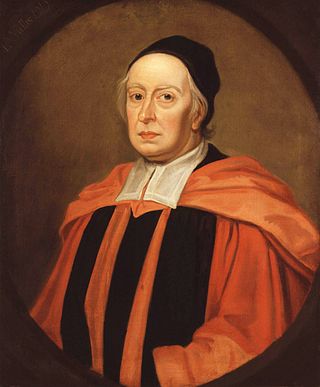Top Qs
Timeline
Chat
Perspective
Wallis' integrals
Family of mathematical integrals From Wikipedia, the free encyclopedia
Remove ads
In mathematics, and more precisely in analysis, the Wallis integrals constitute a family of integrals introduced by John Wallis.

Definition, basic properties
Summarize
Perspective
The Wallis integrals are the terms of the sequence defined by
or equivalently,
The first few terms of this sequence are:
| ... | ||||||||||
| ... |
The sequence is decreasing and has positive terms. In fact, for all
- because it is an integral of a non-negative continuous function which is not identically zero;
- again because the last integral is of a non-negative continuous function.
Since the sequence is decreasing and bounded below by 0, it converges to a non-negative limit. Indeed, the limit is zero (see below).
Remove ads
Recurrence relation
Summarize
Perspective
By means of integration by parts, a reduction formula can be obtained. Using the identity , we have for all ,
Integrating the second integral by parts, with:
- , whose anti-derivative is
- , whose derivative is
we have:
Substituting this result into equation (1) gives
and thus
for all
This is a recurrence relation giving in terms of . This, together with the values of and give us two sets of formulae for the terms in the sequence , depending on whether is odd or even:
Remove ads
Another relation to evaluate the Wallis' integrals
Summarize
Perspective
Wallis's integrals can be evaluated by using Euler integrals:
- Euler integral of the first kind: the Beta function:
- for Re(x), Re(y) > 0
- Euler integral of the second kind: the Gamma function:
- for Re(z) > 0.
If we make the following substitution inside the Beta function:
we obtain:
so this gives us the following relation to evaluate the Wallis integrals:
So, for odd , writing , we have:
whereas for even , writing and knowing that , we get :
Remove ads
Equivalence
- From the recurrence formula above , we can deduce that
- (equivalence of two sequences).
- Indeed, for all :
- (since the sequence is decreasing)
- (since )
- (by equation ).
- By the sandwich theorem, we conclude that , and hence .
- By examining , one obtains the following equivalence:
- (and consequently ).
Proof
For all , let .
It turns out that, because of equation . In other words is a constant.
It follows that for all , .
Now, since and , we have, by the product rules of equivalents, .
Thus, , from which the desired result follows (noting that ).
Remove ads
Deducing Stirling's formula
Summarize
Perspective
Suppose that we have the following equivalence (known as Stirling's formula):
for some constant that we wish to determine. From above, we have
- (equation (3))
Expanding and using the formula above for the factorials, we get
From (3) and (4), we obtain by transitivity:
Solving for gives In other words,
Remove ads
Deducing the Double Factorial Ratio
Summarize
Perspective
Similarly, from above, we have:
Expanding and using the formula above for double factorials, we get:
Simplifying, we obtain:
or
Remove ads
Evaluating the Gaussian Integral
Summarize
Perspective
The Gaussian integral can be evaluated through the use of Wallis' integrals.
We first prove the following inequalities:
In fact, letting , the first inequality (in which ) is equivalent to ; whereas the second inequality reduces to , which becomes . These 2 latter inequalities follow from the convexity of the exponential function (or from an analysis of the function ).
Letting and making use of the basic properties of improper integrals (the convergence of the integrals is obvious), we obtain the inequalities:
for use with the sandwich theorem (as ).
The first and last integrals can be evaluated easily using Wallis' integrals. For the first one, let (t varying from 0 to ). Then, the integral becomes . For the last integral, let (t varying from to ). Then, it becomes .
As we have shown before, . So, it follows that .
Remark: There are other methods of evaluating the Gaussian integral. Some of them are more direct.
Remove ads
Note
The same properties lead to Wallis product, which expresses (see ) in the form of an infinite product.
External links
- Pascal Sebah and Xavier Gourdon. Introduction to the Gamma Function. In PostScript and HTML formats.
Wikiwand - on
Seamless Wikipedia browsing. On steroids.
Remove ads



































![{\displaystyle \int _{0}^{\frac {\pi }{2}}\sin ^{n-2}x\cos ^{2}x\,dx=\left[{\frac {\sin ^{n-1}x}{n-1}}\cos x\right]_{0}^{\frac {\pi }{2}}+{\frac {1}{n-1}}\int _{0}^{\frac {\pi }{2}}\sin ^{n-1}x\sin x\,dx=0+{\frac {1}{n-1}}W_{n}.}](http://wikimedia.org/api/rest_v1/media/math/render/svg/a9bc041e854a7886c226ea1ef97744ddfec878b4)



















































![{\displaystyle t\in [0,1]}](http://wikimedia.org/api/rest_v1/media/math/render/svg/31a5c18739ff04858eecc8fec2f53912c348e0e5)
















